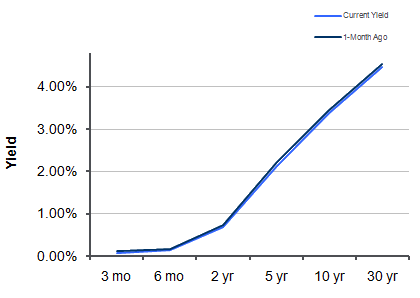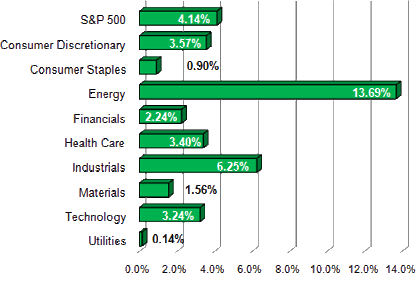
Market Commentary by Scott J. Brown, Ph.D., Chief Economist

February new home sales, existing home sales, and durable goods orders were all weaker than anticipated (new home sales hit a record low!), but the stock market didn’t care. Portugal’s government collapsed after a failure of a vote on austerity measures. Japan’s nuclear problems did not go away. The conflict in Libya continued. Apparently, there’s still plenty of cash in the market looking for something to do.
The Federal Reserve announced the Chairman Bernanke will hold press briefings four times per year to present the Federal Open Market Committee’s current economic projections and to provide additional context for the FOMC’s policy decisions. For 2011, these briefings will be held at 2:15pm following the FOMC decisions on April 27th, June 22nd, and November 2nd. On these days the release of the FOMC policy statement will be moved up to 12:30pm. The Fed said that “the introduction of regular press briefings is intended to further enhance the clarity and timeliness of the Federal Reserve’s monetary policy communication.” Fed officials were reported to have been taken off guard by the widespread criticism of policies undertaken in 2010.
Next week, the focus will be on Friday’s job market data, although the consumer confidence figure has some market-moving potential. The bond market will face a test in the first half of the week with the auctions of $99 billion in 2-, 5-, and 7-year notes. The key question is whether we’ll see a drop in demand from Japan (which is at its fiscal year-end). Private-sector payrolls are expected to post a moderately strong gain for March, but we should see a further decline in state and local government jobs.
Indices
| Last | Last Week | YTD return % | |
| DJIA | 12170.56 | 11774.59 | 5.12% |
| NASDAQ | 2736.42 | 2636.05 | 3.15% |
| S&P 500 | 1309.66 | 1273.72 | 4.14% |
| MSCI EAFE | 1697.54 | 1628.90 | 2.37% |
| Russell 2000 | 817.10 | 785.52 | 4.27% |
Consumer Money Rates
| Last | 1-year ago | |
| Prime Rate | 3.25 | 3.25 |
| Fed Funds | 0.15 | 0.25 |
| 30-year mortgage | 4.81 | 5.07 |
Currencies
| Last | 1-year ago | |
| Dollars per British Pound | 1.613 | 1.490 |
| Dollars per Euro | 1.419 | 1.335 |
| Japanese Yen per Dollar | 80.890 | 92.020 |
| Canadian Dollars per Dollar | 0.977 | 1.025 |
| Mexican Peso per Dollar | 11.947 | 12.559 |
Commodities
| Last | 1-year ago | |
| Crude Oil | 105.05 | 80.31 |
| Gold | 1433.60 | 1086.33 |
Bond Rates
| Last | 1-month ago | |
| 2-year treasury | 0.68 | 0.74 |
| 10-year treasury | 3.39 | 3.44 |
| 10-year municipal (TEY) | 4.89 | 5.09 |
Treasury Yield Curve – 3/25/2011

S&P Sector Performance (YTD) – 3/25/2011

Economic Calendar
| March 28th | — | Personal Income and Spending (February) Pending Home Sales Index (February) Treasury Note Auction (2-year notes) |
| March 29th | — | S&P/Case-Shiller Home Prices (January) Consumer Confidence (March) Treasury Note Auction (5-year notes) |
| March 30th | — | Challenger Layoffs (March) ADP Payroll Estimate (March) Treasury Note Auction (7-year notes) |
| March 31st | — | Jobless Claims (week ending March 26th) Chicago Purchasing Managers Index |
| April 1st | — | Employment Report (March) Construction Spending (February) ISM Manufacturing Index (March) Unit Auto Sales (March) |
| April 5th | — | ISM Non-Manufacturing Index (March) FOMC Minutes (March 15th) |
| April 13th | — | Retail Sales (March) Fed Beige Book |
| April 26th/27th | — | FOMC Meeting Bernanke Press Conference |
Important Disclosures
Past performance is not a guarantee of future results. There are special risks involved with global investing related to market and currency fluctuations, economic and political instability, and different financial accounting standards. The above material has been obtained from sources considered reliable, but we do not guarantee that it is accurate or complete. There is no assurance that any trends mentioned will continue in the future. While interest on municipal bonds is generally exempt from federal income tax, it may be subject to the federal alternative minimum tax, state or local taxes. In addition, certain municipal bonds (such as Build America Bonds) are issued without a federal tax exemption, which subjects the related interest income to federal income tax. Investing involves risk and investors may incur a profit or a loss.
US government bonds and treasury bills are guaranteed by the US government and, if held to maturity, offer a fixed rate of return and guaranteed principal value. US government bonds are issued and guaranteed as to the timely payment of principal and interest by the federal government. Treasury bills are certificates reflecting short-term (less than one year) obligations of the US government.
Commodities trading is generally considered speculative because of the significant potential for investment loss. Markets for commodities are likely to be volatile and there may be sharp price fluctuations even during periods when prices overall are rising. Specific sector investing can be subject to different and greater risks than more diversified investments.
Tax Equiv Muni yields (TEY) assume a 35% tax rate on triple-A rated, tax-exempt insured revenue bonds.
![]() Material prepared by Raymond James for use by its financial advisors.
Material prepared by Raymond James for use by its financial advisors.
The information contained herein has been obtained from sources considered reliable, but we do not guarantee that the foregoing material is accurate or complete. Data source: Bloomberg, as of close of business March 24th, 2011.
©2011 Raymond James Financial Services, Inc. member FINRA / SIPC.


